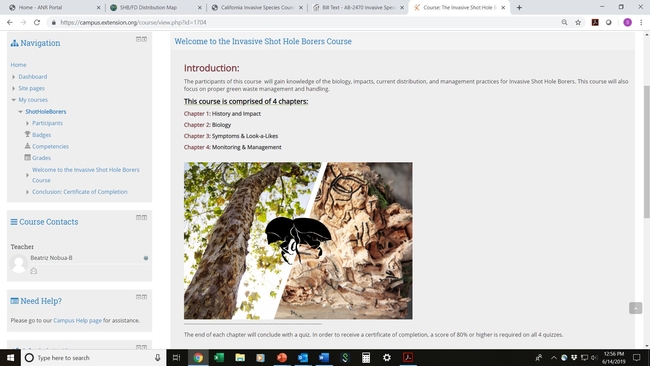UF/IFAS researchers are working on a decision-support app to help policy makers and growers decide the best regional treatment options for laurel wilt disease, which is challenging Florida's $35 million-a-year avocado crop.
Laurel wilt disease is spread by several ambrosia beetle vectors. People, whether they grow avocados or not, can spread the beetles when they move infested wood products – for example, firewood and wood-turner wood -- UF/IFAS researchers say. UF/IFAS researchers are trying to get all this spreading under control.
To help develop the app, scientists are using the HiPerGator, a supercomputer on the main University of Florida campus in Gainesville, to analyze massive amounts of data.
“This network analysis app will aid policy makers by providing input about how such things as subsidies or penalties for disease management are likely to affect growers' management decisions and resulting disease spread,” said Berea Etherton, a doctoral student in plant pathology in the UF/IFAS College of Agricultural and Life Sciences. “Better regional management as a whole benefits individual growers.”
Scientists hope to gain better regional control of laurel wilt through machine learning for analysis of satellite-images. Those analyses train an artificial intelligence system to recognize patterns from remotely sensed images, said Etherton, who's conducting the research under the supervision of her advisor, UF/IFAS Professor Karen Garrett.
“In the next steps for the project, we plan to integrate satellite image analysis and disease recognition to support decision makers considering the best management strategies,” Garrett said. “The computational demands of the machine-learning tools in this project will benefit from the new HiPerGator resources.”
The UF supercomputer will allow for rapid analysis of large data sets, Etherton said. This project is designed to pass the benefits of the HiPerGator on to the growers, as decision support will include input from satellite images and high-speed processing.
Florida avocados are grown almost entirely in Miami-Dade County. Many consumers love to eat them in a variety of ways, including in guacamole dip. But even as laurel wilt disease damages avocado trees, demand for the fruit continues to rise in global markets. According to UF/IFAS economists, about 80% of Florida's avocados are sold outside Florida and the industry has an economic impact of about $100 million to the state's economy.
Garrett and Etherton are working with researchers at the UF/IFAS Tropical Research and Education Center and the U.S. Department of Agriculture. They all hope the app will help control laurel wilt on a regional basis.
“Any technology that is accessible, efficacious and economical and helps producers combat laurel wilt is welcome,” said Jonathan Crane, UF/IFAS professor of horticulture and a tropical fruit Extension specialist at TREC.
“Managing crop diseases is challenging, because the success of one grower's management strategies often depends on how well other growers are managing the disease. We are working to contribute to regional management strategies,” Garrett said.
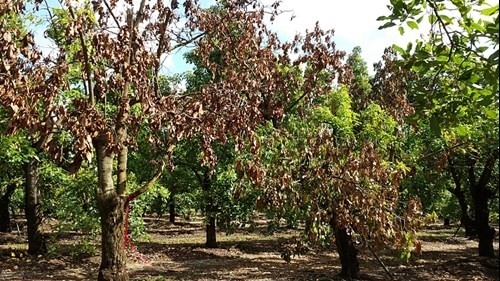
laurel wilt trees
Posted on
Wednesday, November 25, 2020 at
11:08 AM
- Author:
Brad Buck, U of F
Focus Area Tags: Agriculture
Laurel Wilt-Ambrosia Beetle Grower's and Advisory Panel meeting to update and discuss research and extension programs supported by the USDA research grant.
Purpose: The Univ. of Florida/IFAS created a panel consisting of local commercial avocado growers and handlers and scientists for the USDA grant on laurel wilt and ambrosia beetles. The purpose of the meeting is for researchers to update avocado growers and the advisory panel on the progress of research on this grant and to discuss future research and extension plans. This meeting is open to anyone to attend.
Date: July 23, 2020
Time: 10AM-12PM
Location: ZOOM, recording available HERE
AGENDA
Dr. Crane, welcome and introduction
Brief updates, plans and discussion:
1. Dr. Schaffer, Environmental Plant Physiology – Laurel wilt susceptibility of avocado scions and rootstocks in relation to physiology and stem anatomy
2. Dr. Gazis, Plant Pathology – Laurel Wilt - Plant Pathology: Research Accomplishments, Current Work, and Future Direction
3. Dr. Carrillo, Entomology – Update laurel wilt ambrosia beetle research
4. Dr. Evans and Mr. Ballen, Ag Economics - current work and work in progress and plans
5. Dr. Crane and Mr. Wasielewski – Current extension program and plans
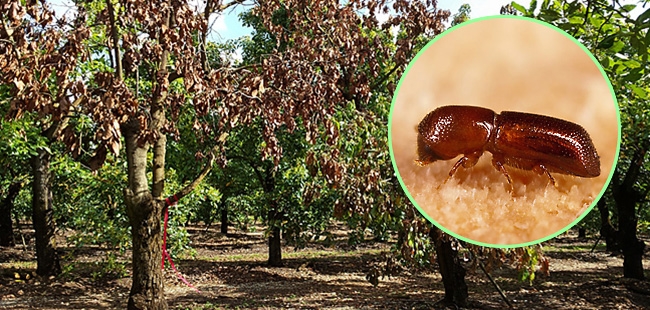
laurel-wilt-and-avocado-trees
Posted on
Monday, July 27, 2020 at
7:17 AM
Focus Area Tags: Agriculture
Laurel Wilt Disease of Avocado and the relatives of avocado in the Laurel Family has devastated the the forests along the east coast from North Carolina down to Florida and along the Caribbean into Texas. It has caused significant losses to wildlands and to the Florida avocado industry.
The extent of the native tree loss is shocking and there is very little that can be done to correct the problem, other than to curb the spread of contaminated wood that is spread by humans, There has been some success in the avocado orchards. While there is no "silver bullet", there is some progress, e.g. pruning to increase light levels to suppress Ambrosia Beetle activity. In addition, research has continued for:
- Vaccinations to protect avocado trees from the LW pathogen
- Developing a faster LW diagnostic tool
- Screening scions and rootstocks for tolerance/resistance
- AB control tactics and suppression
- Molecular understanding of the pathogen
- Economics and the LW epidemic
Read the latest results in these two recent publications:
Recommendations for the Detection and Mitigation of Laurel Wilt Disease in Avocado and Related Tree Species in the Home Landscape
Recommendations for Control and Mitigation of Laurel Wilt and Ambrosia Beetle Vectors in Commercial Avocado Groves in Florida1
Photo: Dead avocado trees from Laurel Wilt in Florida
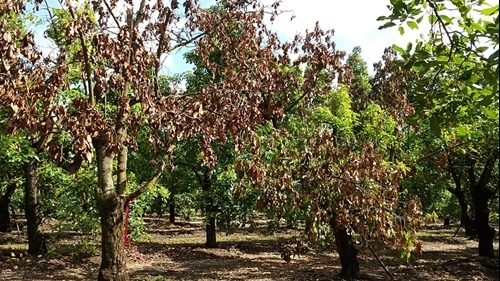
laurel wilt trees
Posted on
Wednesday, April 22, 2020 at
7:19 AM
Focus Area Tags: Agriculture
Update on invasive shot hole borers: Online training now available
By Sabrina Drill, Natural Resources Advisor, UCCE Ventura
Invasive shot hole borers (ISHB) are a pest and disease complex potentially affecting over 200 tree species, but posing a strong risk to box elders, sycamores, and other riparian and urban trees, as well as being a nuisance pest for avocado. The beetles have also been shown to attack a wide variety of common and less common ornamental species. For a complete host list, visit https://ucanr.edu/sites/pshb/overview/SHB_Reproductive_Hosts/. The tiny beetles burrow into the trunks and branches of trees and create galleries where they cultivate a fungus that utilizes the trees own circulatory system, harming and in some cases killing the tree. We know the beetle can reproduce in over 60 species of trees, and they have devasted natural riparian areas, though we are beginning to see recovery of some infestations. Currently, the most effective management method is to remove infested wood, sometimes entire trees, and chip what is removed to minus 1”.
ISHB are now firmly established in Ventura County, with finds throughout the Santa Clara River Valley in traps from South Mountain to Toland Park in Santa Paula, and several infested box elder and sycamores in Meiner's Oaks and Ojai. It appears not to have crossed into the county in the south, but there are still active infestations in western Los Angeles County.
Personnel from UC ANR, CDFA, the Ventura County Agricultural Commissioner, and the US Forest Service have taken lead roles in developing a statewide ISHB action plan for the California Invasive Species Advisory Committee, with an initial investment of $5 million to work on controlling the pest. Plan elements include research in the ecology and control of the pest, including work to develop biocontrol; an early detection and surveillance program; addressing green waste and other pathways of spread, and outreach and education.
In terms of education and outreach, an area where Cooperative Extension in Ventura, LA, Orange, and San Diego counties have led, we're excited to announce the release of a new on-line training course. Available through our website, https://ucanr.edu/sites/pshb/, the course is actually served by the eXtension on-line learning platform (and users will need to create a free account). The course consists of 4 chapters including history and impacts, biology, symptoms and look-alike pests, and monitoring and management. While it can't fully replace a field training, it can be a good way to familiarize new staff to the issues.
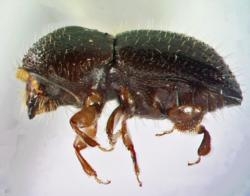
shot hole borer
Posted on
Friday, July 5, 2019 at
6:48 AM
“Laurel wilt – A threat to California's avocado industry”
Presented by: California Avocado Society, Inc., California Avocado Commission, University of California Cooperative Extension, and University of Florida's Tropical Research and Education Center. Event is FREE, everyone is welcome!
- Tuesday, July 30, 2019, 9-11 AM.,
Pala Mesa Resort, Fallbrook
- Wednesday, July 31, 2019, 9:00 a.m. to 11:00 a.m.,
UC Cooperative Extension Office Auditorium, 669 County Square Dr. Ventura, CA 93003
- Thursday, August 1, 2019, 9-11 AM.,
San Luis Obispo Farm Bureau Office
Agenda
The current status of Laurel Wilt in South Florida
Laurel Wilt epidemiology and management
Laurel Wilt Vectors and Management
Vascular physiology, anatomy and susceptibility of different avocado cultivars
Economic impact of control strategies
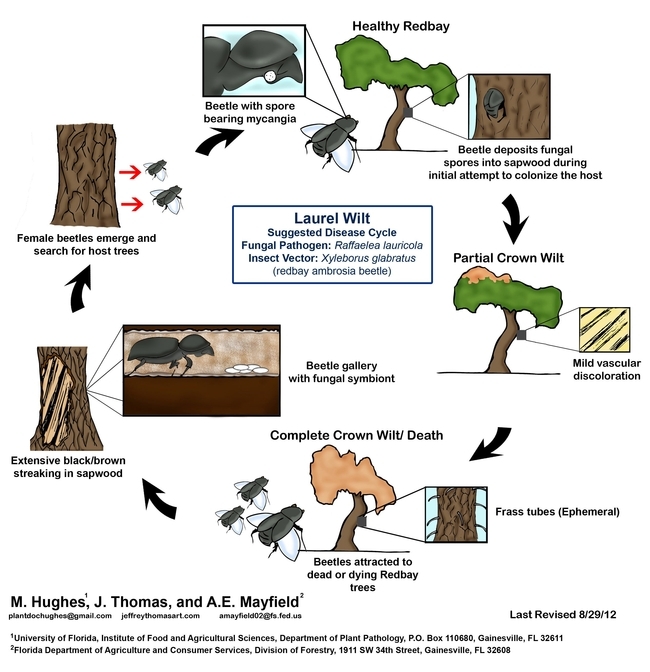
laurel wilt cycle
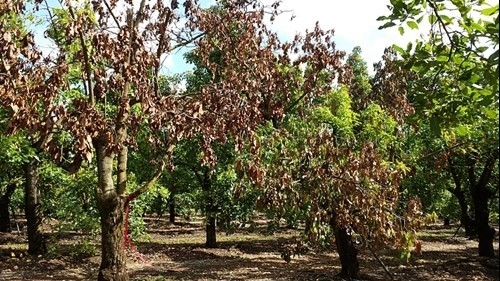
laurel wilt trees
Posted on
Thursday, June 27, 2019 at
5:10 PM





